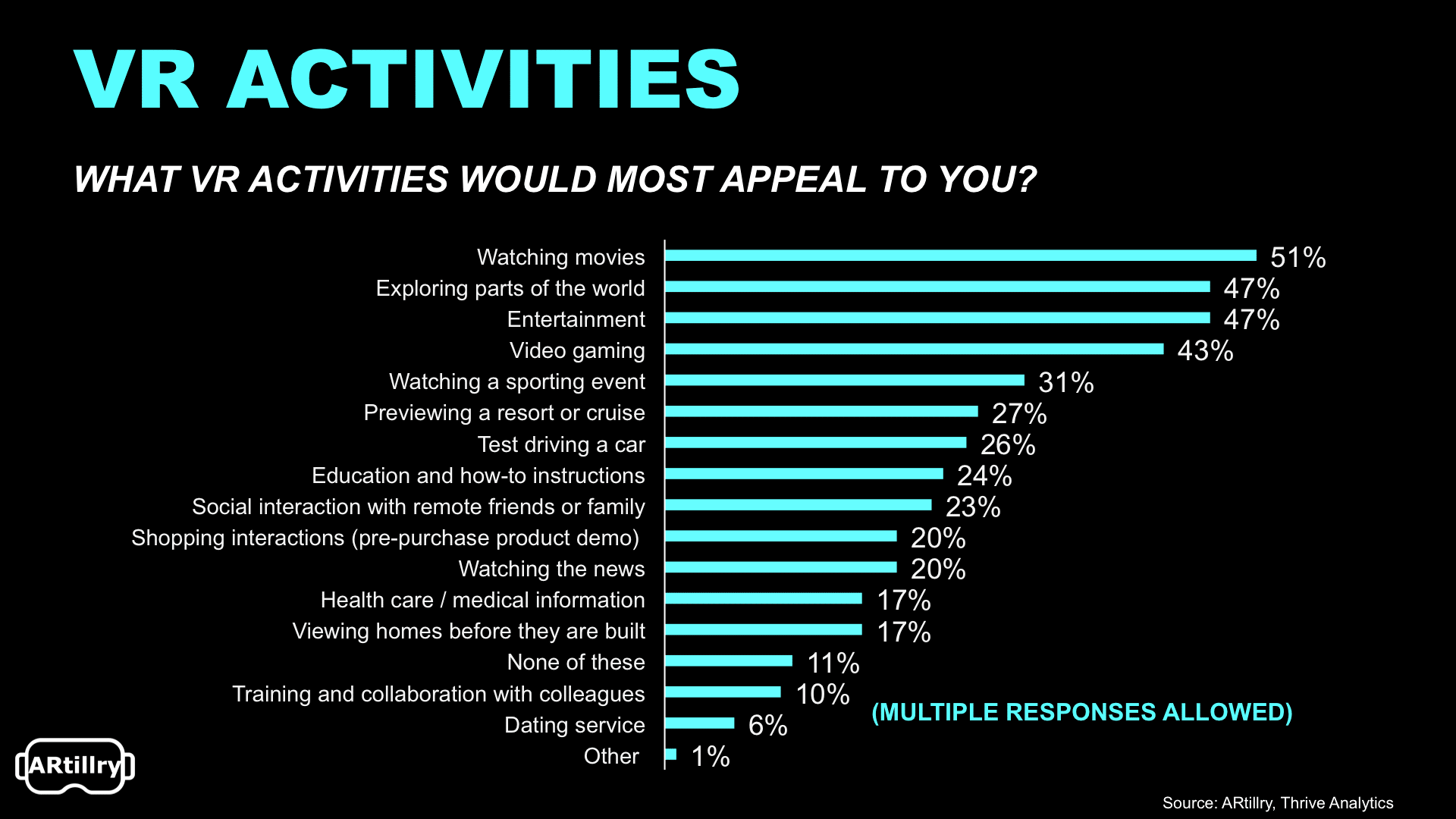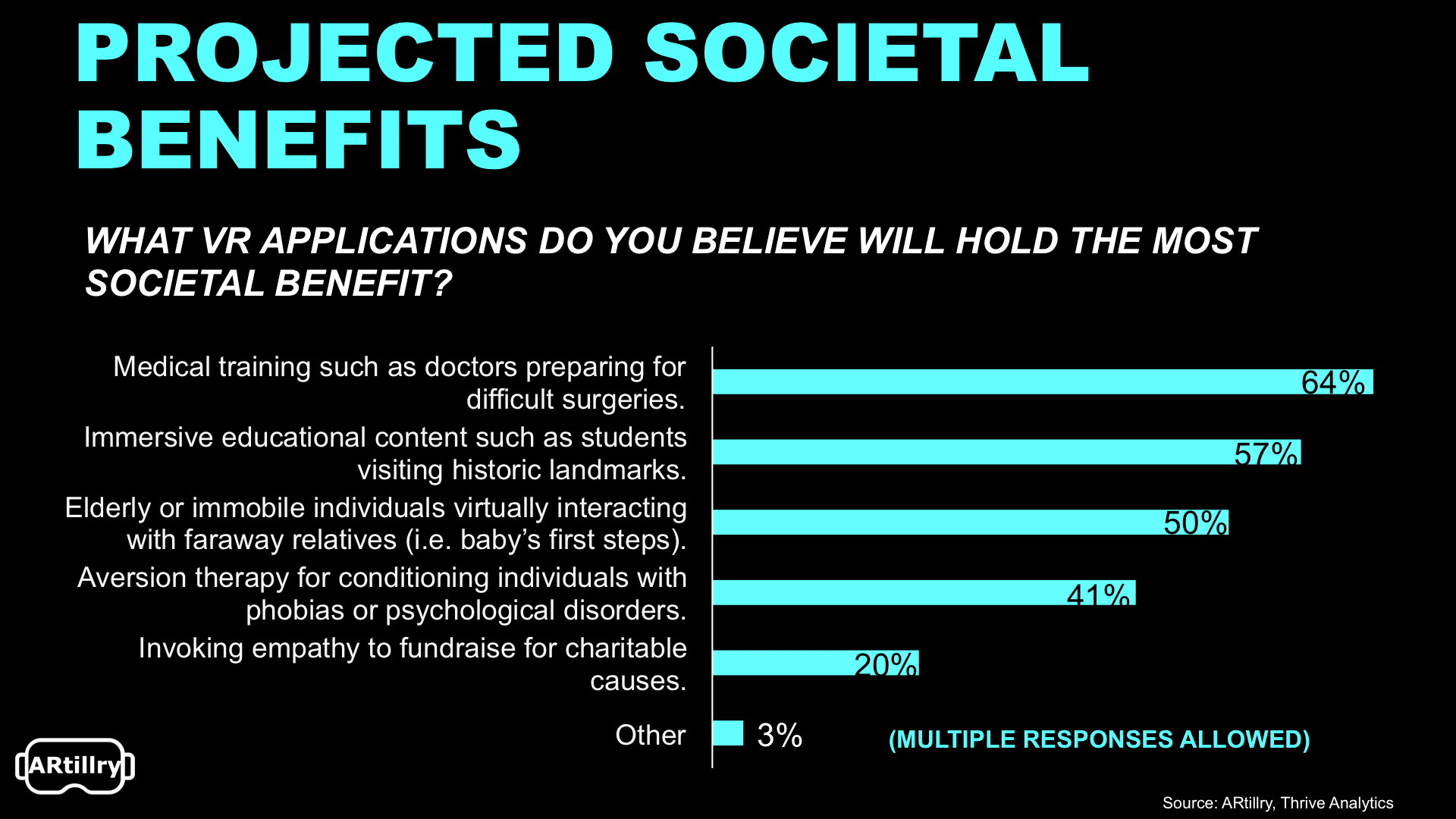
What types of activities drive VR adoption? What are the use cases that get consumers excited about owning a VR headset? These are key questions as the VR industry struggles to boost consumer headset sales.
So we set out for answers. Working with Thrive Analytics, ARtillry authored questions to be fielded through its established survey engine. This first wave of Virtual Reality Monitor surveys 2000 U.S. adults to reveal consumer behavior patterns. Then we built a report around the findings.
An excerpt is below, covering the question of what types of VR activities resonate most. It’s a mix of lead-back entertainment and lean- forward discovery (think: 3D tours for travel). Movie watching’s high rating also comes as Big Screen just scored a series A funding round.
Part IV. Applications
Drilling down yet another level, what are the VR applications and activities that most appeal to consumers? As examined earlier, content is key to VR adoption… and there must be enough of it to get consumers interested in adopting. But what kinds of content are they specifically looking for?
The top result for favorable VR activities was watching movies. Though not very immersive (see section V), this was followed by potentially immersive activities like exploring the world (47 percent), watching sports (31 percent), test-driving a car (26 percent), and social interaction (23 percent).

These are the experiences to consider when exploring VR business opportunities, or evaluating its points of intersection with an existing business. Online travel booking and car shopping/comparison apps for example should look at the above results when devising product evolution strategies.
As for more altruistic VR applications – those that serve a greater good rather than a personal need – respondents rated medical training as the top use case. That was followed by education, communications for the elderly and mental therapy/conditioning. None of these were surprising.
Meanwhile, activities that ARtillry believes are under-rated in these results include employee training and collaboration, social interaction, education and shopping interactions. These are areas we’re examining and project strong long-term use cases for VR, despite lower reported interest today.

For a deeper dive on AR & VR insights, see ARtillry’s new intelligence subscription, and sign up for the free ARtillry Weekly newsletter.
Disclosure: ARtillry has no financial stake in the companies mentioned in this post, nor received payment for its production. Disclosure and ethics policy can be seen here.
